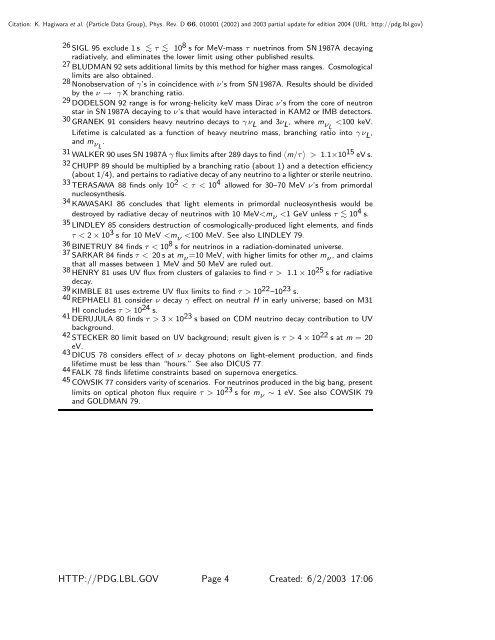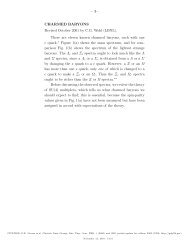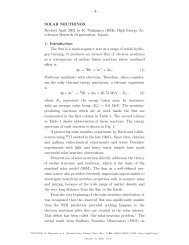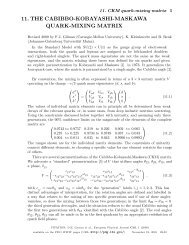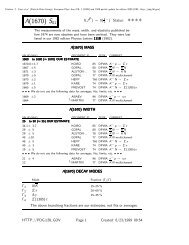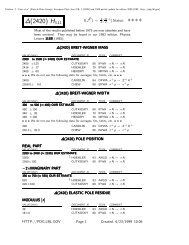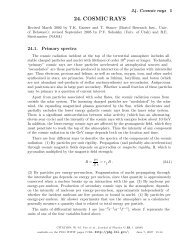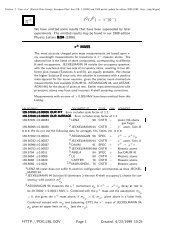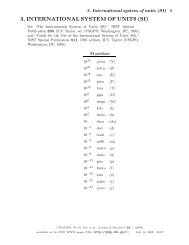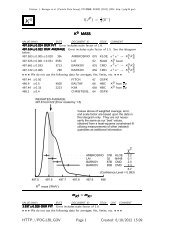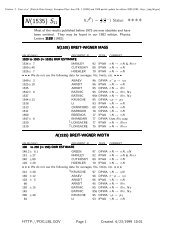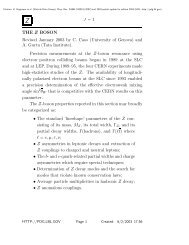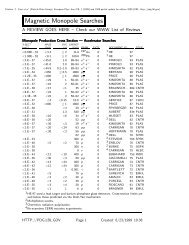?? - Particle Data Group
?? - Particle Data Group
?? - Particle Data Group
Create successful ePaper yourself
Turn your PDF publications into a flip-book with our unique Google optimized e-Paper software.
Citation: K. Hagiwara et al. (<strong>Particle</strong> <strong>Data</strong> <strong>Group</strong>), Phys. Rev. D 66, 010001 (2002) and 2003 partial update for edition 2004 (URL: http://pdg.lbl.gov)<br />
26 SIGL 95 exclude 1 s <<br />
∼ τ <<br />
∼ 108 sforMeV-massτnuetrinos from SN 1987A decaying<br />
radiatively, and eliminates the lower limit using other published results.<br />
27 BLUDMAN 92 sets additional limits by this method for higher mass ranges. Cosmological<br />
limits are also obtained.<br />
28 Nonobservation of γ’s in coincidence with ν’s from SN 1987A. Results should be divided<br />
by the ν → γ X branching ratio.<br />
29 DODELSON 92 range is for wrong-helicity keV mass Dirac ν’s from the core of neutron<br />
star in SN 1987A decaying to ν’s that would have interacted in KAM2 or IMB detectors.<br />
30 GRANEK 91 considers heavy neutrino decays to γνL and 3νL ,wheremνL 1.1×1015 eV s.<br />
32 CHUPP 89 should be multiplied by a branching ratio (about 1) and a detection efficiency<br />
(about 1/4), and pertains to radiative decay of any neutrino to a lighter or sterile neutrino.<br />
33 TERASAWA 88 finds only 102


